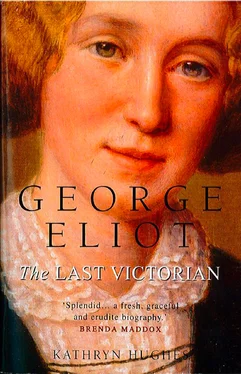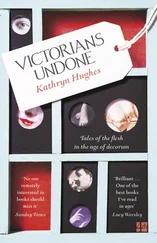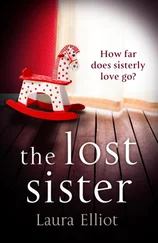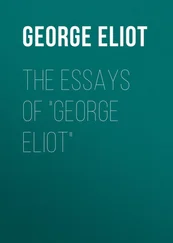Only a few years previously Mary Ann had been made to wait in the housekeeper’s room, while her father talked business with old Mr Newdigate. Now here she was, taking possession of the library, that symbol of culture, achievement and learning. Her father’s professional success and her own genteel education had eased her transformation from near-servant to near-lady. Instead of the awkward little girl with the thick Warwickshire accent of only a few years ago, there was an intense young woman with a well-modulated voice and an abundance of learning, as well as the required string of genteel accomplishments. Of course, no amount of round vowels and fancy arpeggios were ever going to give Mary Ann a smooth passage into the gentry. Mrs Newdegate might allow her agent’s daughter to borrow her books and run her clothing club, but she was not going to invite her to dinner or allow her to marry her son. These distinctions of rank, so subtle and yet so rigid, grated on Mary Ann, as a passage from Felix Holt , perceptively quoted by John Cross, suggests: ‘No one who has not a strong natural prompting and susceptibility towards such things [the signs and luxuries of ladyhood], and has, at the same time, suffered from the presence of opposite conditions, can understand how powerfully those minor accidents of rank which please the fastidious sense can preoccupy the imagination.’ 34
Like many upwardly mobile men and women of the Victorian period, Mary Ann’s transformation into a member of the genteel middle class remained open to scrutiny all her life. Eliza Lynn, a minor novelist of about the same age who met Mary Ann when she was in her early thirties and bore her a strange lifelong grudge, maintained that ‘there was something underbred and provincial [about Miss Evans] … She held her hands and arms kangaroo fashion; was badly dressed; had an unwashed, unbrushed, unkempt look altogether.’ 35 Even when George Eliot was at the height of her reputation and had acquired sufficient money to buy herself some new clothes and a hairbrush there were still those ready to snipe at her lack of breeding. In an increasingly secular age, her irregular relationship with G. H. Lewes was linked less often to the fact that she did not attend church than that she was, more pertinently, ‘not quite a lady’.
Mary Ann’s confidence about putting together an ecclesiastical chart reflects the scope of her reading during these Griff years. Although she had refused her father’s offer of a housekeeper, she allowed him to fund her continuing education in other ways. Twice a week Signor Joseph Brezzi arrived from Leamington to teach her Italian and German – the language which was to play such an important part in her personal and professional life. Robert Evans also happily settled her bills at Short’s, the Nuneaton bookseller who did his best to keep up with her often obscure demands. It was now that she embarked on a habit of private reading which was to form the foundation for one of the greatest self-educations of the century. During these gloomy Evangelical years of 1837–40 the books she chose were inevitably religious. None the less, her practice of careful study, shrewd analysis and clear summary writing (in the form of letters to Maria Lewis and Martha Jackson) laid the basis for the critical skills which she was to apply across the huge range of subject matter which she tackled during her working life.
Her letters to Maria Lewis, who was now installed unhappily as a governess in a clergyman’s family near Wellingborough, set out a formidable list of titles during the years 1838 to 1839. The core text remained the Bible, which she read every day. To this was added a series of commentaries and theological works, which helped define her position on the doctrinal controversies that were close to tearing apart the Established Church. The Tracts for the Times , with their yearnings for an Anglican Church reconciled with Rome, predictably repelled her. She looked more favourably on Joseph Milner’s History of the Church of Christ (1794–7) with its mild Evangelicalism and cautious tolerance towards dissenters. Another book she liked was John Hoppus’s Schism as Opposed to Unity of the Church (1839), which attacked the assumption of Roman Catholics and Anglicans that the structure of their Church rested on the direct authority of God. Years later it was this ability to empathise with intellectual and psychological positions far from her own that would mark George Eliot’s mature art. At the age of twenty, however, open-mindedness simply muddled her. ‘I am powerfully attracted in a certain direction but when I am about to settle there, counter assertions shake me from my position.’ 36
Mary Ann’s Evangelical conscience did not allow her to read for pleasure. Works of fiction, which took the reader away from the stern business of soul-saving and into a compensatory world of fantasy, were, she believed, particularly harmful. In an essay disguised as a letter to Maria Lewis on 16 March 1839 she set out her objection to novels: ‘For my part I am ready to sit down and weep at the impossibility of my understanding or barely knowing even a fraction of the sum of objects that present themselves for our contemplation in books and in life. Have I then any time to spend on things that never existed?’ With the convenient exception of her beloved Scott, plus a few individual works such as Don Quixote and Robinson Crusoe , Mary Ann sternly outlawed all novels in favour of religious and historical texts. Even fiction on religious themes, of which there was a huge outpouring at this time, ‘should be destroyed for the public good as soon as born’. 37
Instead Mary Ann filled up her tiny amounts of free time by plunging into biographies of the good and the great, identifying with their struggles while going out of her way to deny any hubris. The experiences of William Wilberforce, the Evangelical reformer who campaigned against slavery, struck an immediate chord: ‘There is a similarity, if I may compare myself with such a man, between his temptations or rather besetments and my own that makes his experience very interesting to me. O that I might be made as useful in my lowly and obscure station as he was in the exalted one assigned to him.’ 38 Other model lives devoured included John Williams, an obscure dissenting South Seas missionary, and the sentimental Hannah More whose Evangelical pieties were immensely popular in middle-class households. Favoured poets included those twins of religious verse, Cowper and Young.
Although piety was the cloak Mary Ann threw over her intellectual energy, at times the full scope of her ambition peeps through the learned references and pious quotations with which she peppers her letters to Maria Lewis. Her early drive did not dissipate just because she was now at home making cheese. If anything, frustrations about the limitations on her time intensified it. Her letters to Maria Lewis are didactic and pedagogic, anxious to display their superior knowledge. She lectures her former teacher on German pronunciation, recommends books, and generally acts like the older woman’s spiritual and intellectual adviser.
But Mary Ann remained painfully aware that this desire to show off was the result of Ambition, her besetting sin. As a good Evangelical Christian, she should stamp on any impulse to push herself forward – these early letters are full of apologies for egotism, for talking too much about herself, for ‘the frequent use of the personal pronoun’. 39 At twenty she was not able to integrate these two sides of her personality – the desire for attention and the wish to surrender the self – and the result is a series of emotionally and tonally uneven letters. A demand for attention from Maria is followed by a humble withdrawal, in which Mary Ann imagines Miss Lewis thinking critically of her and rushes to apologise.
Читать дальше












